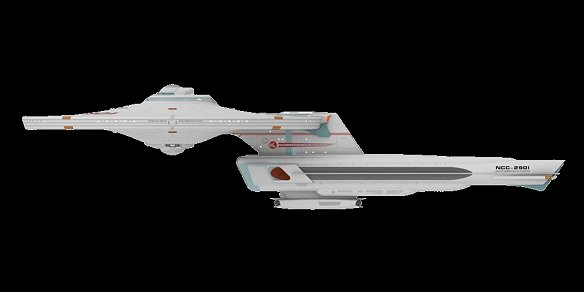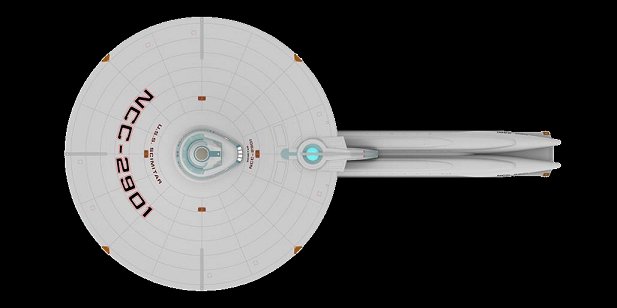


 The requirement for a new super scout vessel to replace the earlier Austin, Kruger and Reliance classes that had not measured up to the latest cloaked vessels identified in the Klingon and Romulan fleets. The new Project Kestrel was to utilise the Big Ear sensor array as designed by Captain Robert Earl Day. The sensor array had been tested on Monoceros class NCC 612 U.S.S. Pegasus but was found that Starfleet required a more rapid response design than the Monoceros class allowed. The Project Scimitar fast destroyer design immediately lent itself to the idea of a fast scout that could be deployed to areas of interest to gather information realtime and feed it back to the fleet. The location of the photon launcher ventral of the warp nacelles would allow for the large Big Ear array. Testing started in 2285 with NX 3000 under the command of David John Schmidt for the first two years of her operation whilst undergoing trials.
The requirement for a new super scout vessel to replace the earlier Austin, Kruger and Reliance classes that had not measured up to the latest cloaked vessels identified in the Klingon and Romulan fleets. The new Project Kestrel was to utilise the Big Ear sensor array as designed by Captain Robert Earl Day. The sensor array had been tested on Monoceros class NCC 612 U.S.S. Pegasus but was found that Starfleet required a more rapid response design than the Monoceros class allowed. The Project Scimitar fast destroyer design immediately lent itself to the idea of a fast scout that could be deployed to areas of interest to gather information realtime and feed it back to the fleet. The location of the photon launcher ventral of the warp nacelles would allow for the large Big Ear array. Testing started in 2285 with NX 3000 under the command of David John Schmidt for the first two years of her operation whilst undergoing trials.| Kestrel | 3000 | Prototype | Superscout with passive OC9777W 'Big Ear' sensor array. |
| Merlin | 3001 | ||
| Hawk | 3002 | ||
| Osprey | 3003 | ||
| Raptor | 3004 | ||
| Falcon | 3005 | ||
| Kite | 3006 | ||
| Harrier | 3007 | ||
| Owl | 3008 | ||
| Condor | 3009 | ||
| Buzzard | 3010 | ||
| Sparrowhawk | 3011 | ||
| Goshawk | 3012 | ||
| Vulture | 3013 | ||
| Hobby | 3014 | ||
| Harpy | 3015 |






